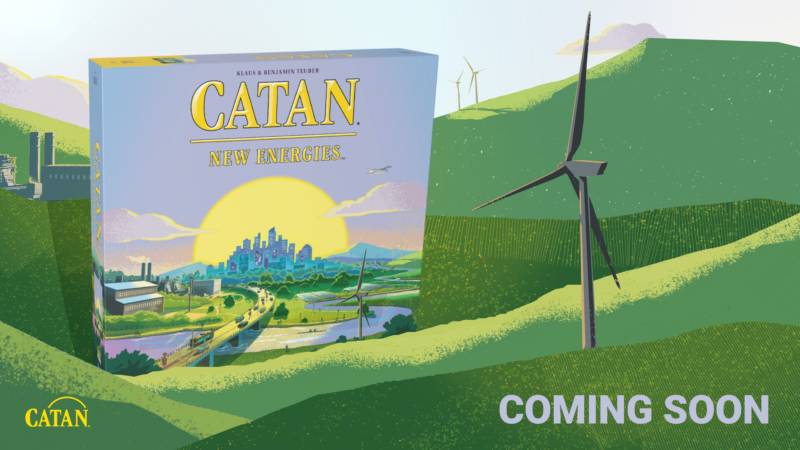
In Klaus Teuber's Catan (previously Settlers of Catan), the player is tasked with starting from scratch and building as much as they can: the largest army, the most cities, the best sea ports for easy trading, even the longest road. It's all beneficial, and the only real drawback is that you have to prioritize certain things over others. There wasn't direct conflict or battle, but there were scarce resources, and the savviest player could corner the market for them.
Catan was released in 1995. Now, in 2024, Teuber's son, Benjamin Teuber, is releasing Catan: New Energies, which he developed with his late father. While it is "rooted in classic Catan mechanics of trading, harvesting, and building," there are some decidedly 2024 issues at play now that the Vikings have settled in for more than a millennia.
As detailed by Benjamin Teuber in a Fast Company interview, New Energies will see players:
- Choosing between cheaper fossil fuel power or research-intensive renewables
- Limited in resources as pollution grows
- Ending the game entirely if pollution hits a certain level
- Countering pollution with "green tokens" from renewable building
- Dealing with the effects worldwide climate change exacts on smaller islands
- Realizing that "As in real life, the most sustainable player does not always win."
It is, however, a hopeful game. The game comes by its "meaningful, evidence-based message" as sincerely as is possible for a mass-produced product. New Energies is printed and assembled in the US, contains no plastic, and uses sustainably sourced wood and paper materials. It's available now for preorder at $70 and due in the spring of 2024.
Advertisement- Catan: New Energies with all pieces and boards laid outCatan GmbH
- A player board from Catan: New Energies. The brown pieces are drawn more frequently at the beginning, but gradually transition to green tokens.Catan GmbH
- Dev cards from Catan: New Energies.Catan GmbH
As with Catan games in general, the game's competition for land and resources is balanced by the presence of other players, whose actions, appetite for trading, and even collaboration can affect outcomes.
“Very often at the end of the game, you see everybody completely freaking out, like, ‘Oh man, we’ve got to save the world!’” Benjamin Teuber told Fast Company. “But the pollution is already here, like what did you expect? And then maybe people start working together, and that’s a really nice effect that makes you think ‘if we do all work together and all did our share, then it can work, and all it cost is that we grow a little bit slower.’”
If you haven't played a Catan game in a while or missed most of the variants and alternate settings, New Energies might provide a distinctly fresh experience. The artwork, by Ian O'Toole (On Mars, Rococo, Fit to Print), is distinct from the original. And the new systems look like they'll provide some new layers of strategy for those who might feel too familiar with the core Catan concepts.
At a minimum, you can test your friends' patience and sense of humor by playing as a game-ending cheap coal villain. Global footprint marker? Environmental inspector? Not your problem.
This post was updated at 3:30 p.m. Eastern to note the game's overall hopeful nature, which might not have been apparent at first glance.


















